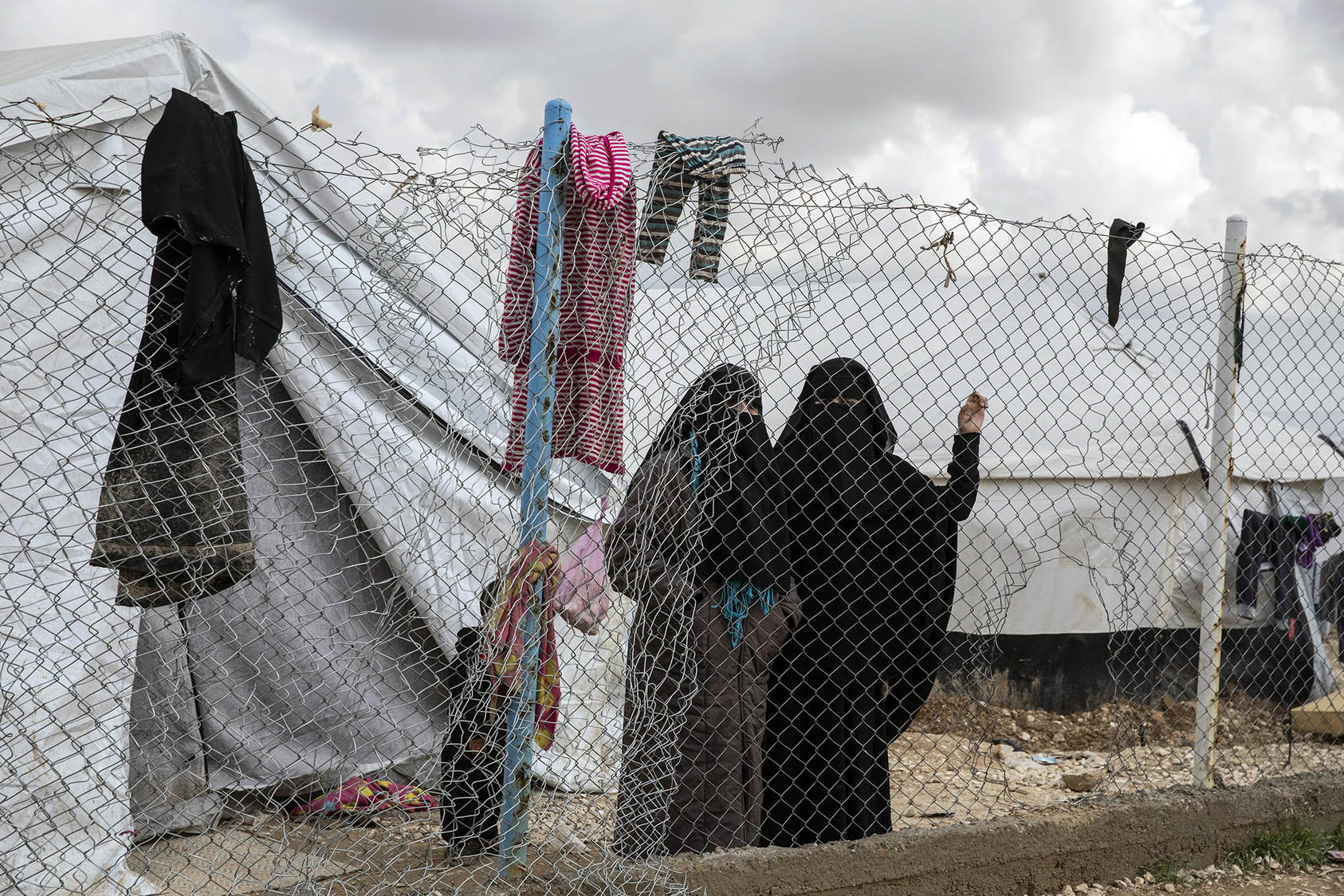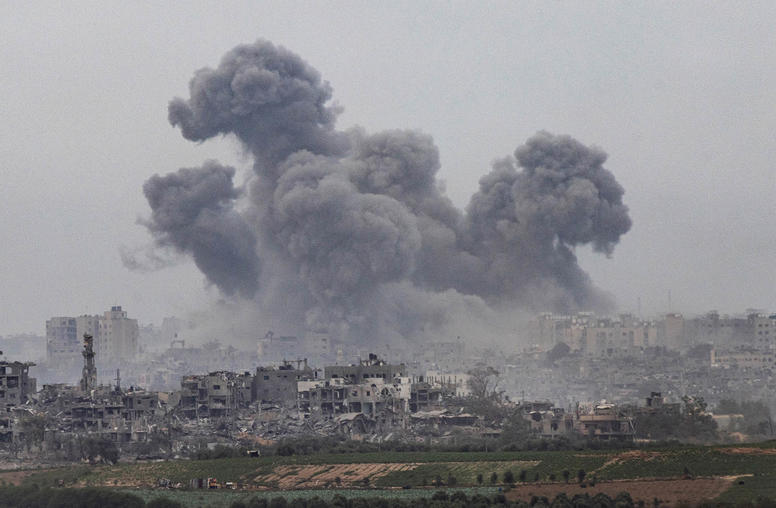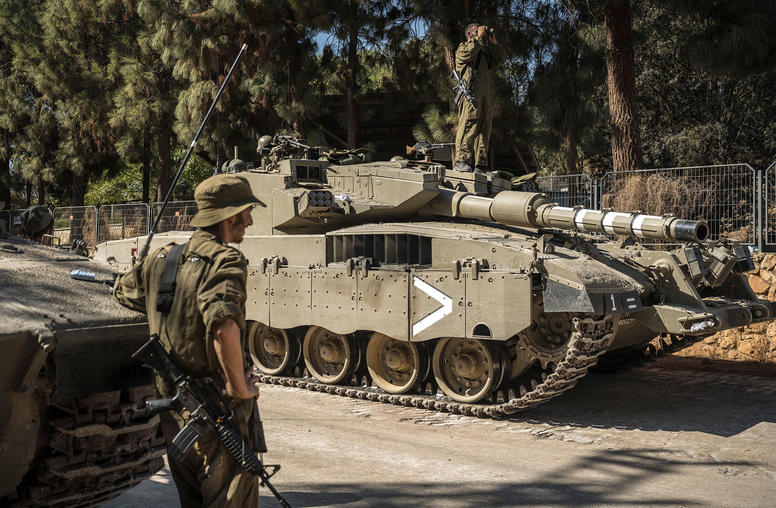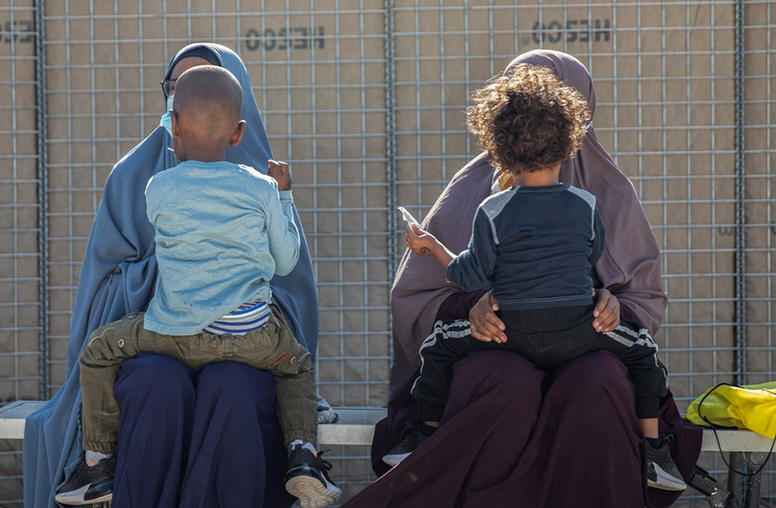Coronavirus and ISIS: The Challenge of Repatriation from Al-Hol
Although COVID-19 could push the camp to the brink, there is still time to get a head of the pandemic before it hits.
It was just over a year ago, in March of 2019, that the United States and coalition forces declared the territorial defeat of ISIS following the fall of its last stronghold in Baghouz, Syria. Male fighters over 15 were placed in Kurdish-run detention centers throughout northeast Syria, while tens of thousands of women and children who were living among the terrorist organization streamed into the al-Hol camp, giving rise to an unprecedented mix of humanitarian and security challenges. If left unaddressed, the camp could easily serve as the breeding ground for the next generation of ISIS, which is already beginning to reemerge in parts of Syria and Iraq.

A Dire Humanitarian Situation
The camp now houses over 68,000 women and children, including around 10,000 foreigners from over 50 countries, some who may be affiliated with ISIS—but even those who are not carry the stigma. Conditions in al-Hol are horrendous, and because the camp is under the control of Kurdish authorities—a non-state actor—it complicates the provision of services by typical actors such as the U.N. The COVID-19 pandemic now gripping the world is likely to push war ravaged northeast Syria, especially al-Hol, to a breaking point, underscoring the urgent need for the international community to respond.
Humanitarian organizations that have been able to operate within al-Hol have long noted that given the untenable situation, the only durable solution is the return and repatriation of the population. Calls for countries to take responsibility for their citizens and alleviate some of this humanitarian burden, however, have fallen on deaf ears. While the United States has repatriated dozens of its citizens, other governments have refused to repatriate their citizens within al-Hol, unwilling to take the political risk of repatriating someone who may go on to carry out an attack.
The security threat emanating from the camp cannot be ignored and is complicated by the humanitarian situation, where there is no freedom of movement. Al-Hol’s population—including 43,000 children—has been traumatized by years of war and from living under the oppressive and violent rule of ISIS. The longer this population remains in awful living conditions without prospects for a future beyond al-Hol, the more likely residents are to radicalize or harden existing beliefs.
A worsening humanitarian situation and increased pressure within al-Hol due to the pandemic elevate the potential for the camp to collapse altogether. Nearby Kurdish prisons for ISIS combatants have already seen two escape attempts, highlighting the security risk posed by ISIS supporters within al-Hol. The already urgent need for countries to repatriate their citizens is accelerating rapidly as they face the potential for the uncontrolled return of their citizens should the camp collapse or some of the ISIS supporters within al-Hol escape.
Moving Beyond the Counterterrorism Focus
Despite the bleak outlook, there is opportunity in the current situation. COVID-19 has yet to become pervasive in northeast Syria, allowing countries a chance to get ahead of the impact of the public health emergency on their citizens by repatriating them in a controlled manner as soon as possible. The added benefit is that this not only helps to address some of the security risks associated with al-Hol, but also provides some humanitarian relief by reducing the numbers in the camp. This critical action could save hundreds of lives and limit the potential for al-Hol to become a COVID-19 hot spot in the months to come.
The major sticking point in the repatriation of citizens, however, has been the counterterrorism lens that policymakers have relied on, tracking the issue as one to be addressed by defense and intelligence agencies rather than a whole-of-government approach. This was originally necessary to stem the flow of thousands of foreign fighters to the caliphate but is now hindering the response in multiple ways. This focus has not only made addressing al-Hol’s humanitarian challenges difficult, but also made it politically unpalatable for European countries, especially, to repatriate their citizens. To begin to shift away from this approach to repatriation, the United States can take several immediate actions that will have a longer-term impact.
- Change the rhetoric. As a first step, the United States can emphasize the use of humanizing language and focus on highlighting success stories around repatriation, such as those emanating from Kazakhstan. The use of dehumanizing language such as “ISIS babies” or “jihadi brides” by leaders, often reinforced in the media, suggests these women have no agency or ability to be rehabilitated and makes it more difficult to change perceptions necessary for repatriation to be politically feasible.
- Prioritize women and children. To reinforce this shift away from the counterterrorism focus, the U.S. can also push for the formation of a new working group within the Global Coalition to Defeat ISIS, dedicated to the unique challenge of returning women and children. This could formalize the repatriation process, making it more public and streamlining the process so that repatriation can happen faster. This would have the added benefit of being a forum where the challenges of repatriating the large Iraqi population in al-Hol could be addressed in the future.
- Increase direct efforts in support of repatriation. Considering the immediate implications to U.S. national security and the narrow window of opportunity before humanitarian conditions worsen, or the security situation within al-Hol hits a breaking point, the United States should step up its effort to aid repatriation. This is especially important given that U.S. troops are the only force on the ground in northeast Syria that can quickly enable repatriation.
- Streamline funding mechanisms. As appropriations bills are being raced through Congress in response to COVID-19, there is an opportunity to ensure the funding mechanisms necessary for U.S. support to repatriation of women and children are simplified. As it stands, the Department of Defense uses the Counter-ISIS Train and Equip Fund (CTEF) when it repatriates individuals from Syria at the request of allied governments. However, because of the nature of CTEF, when these transport flights are arranged, there must be at least one male foreign terrorist fighter on each flight to also be repatriated. This is a non-starter for many governments already struggling to convince their citizens that they should even take back women and children. If Congress were to pass legislation allowing for CTEF funds to be used to repatriate just women and children, or create a new funding mechanism solely for this purpose, it could make it much easier for countries to work with the United States to repatriate their women and children, while also showing America’s commitment to addressing this vexing challenge.
The international community has failed to act on al-Hol since it opened to the former residents of Baghouz. Amid the pandemic, there is greater urgency and an opportunity to rectify this by accelerating efforts to repatriate the nearly 10,000 foreign women and children within the camp’s annex. This would reduce some of the security threat and humanitarian burden, while also addressing the public health challenge. Controlled return means that countries can quarantine women and children, better assess their individual cases, and tailor their approach to disengagement and reintegration or prosecution. The alternative is chaos that poses an immediate threat to global security and a public health threat to northeast Syria and the rest of the world. This is a crucial moment where small U.S. actions can make an enormous difference.



